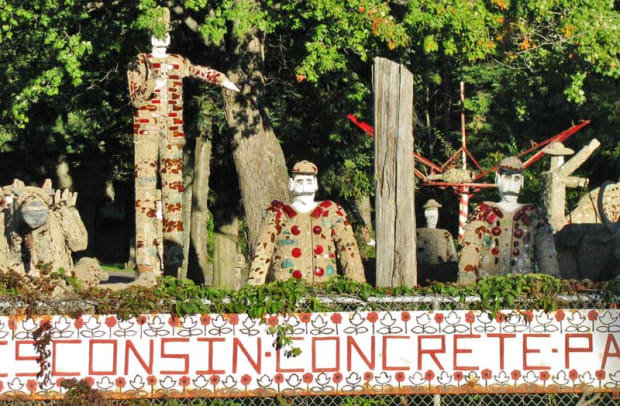In 1948, after years as a lumberjack in the Northwoods of Wisconsin, Fred Smith (1886-1976) retired to his 120-acre homestead just outside of the small town of Phillips. But retirement didn’t take.
Despite being in his 60s and nearly crippled with arthritis, Smith embarked on one of the most improbable and fantastical art careers imaginable, creating 237 life-size and larger-than-life sculptures of people, animals and events from history, from local lore, and from Smith’s fertile imagination. The concrete sculptures, embellished with colored glass, fill the land around his home and the Rock Garden Tavern, a bar he built and operated on his property.
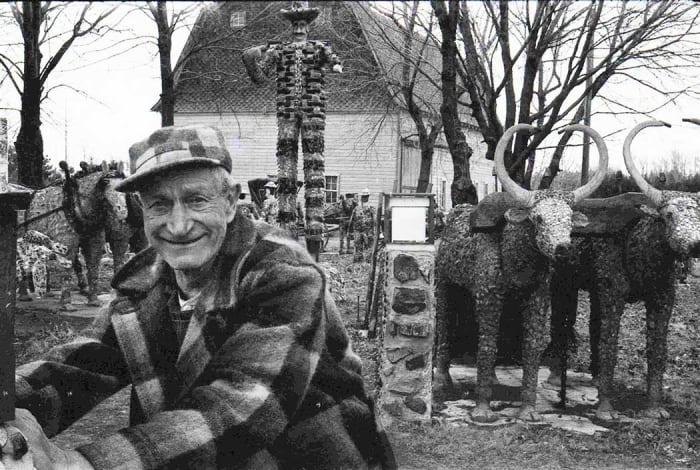
With no art training, Fred Smith created incredible works of wonder during a mystifying 16-year creative frenzy.
Courtesy Robert Armft/Wisconsin Concrete Park
Smith dubbed his mind-boggling and wondrously whimsical collection of self-taught art the Wisconsin Concrete Park. Today, nearly fifty years after his death, the park remains a masterwork of 20th century vernacular art environments, open to a curious and enthralled public – just as Smith had always wanted.
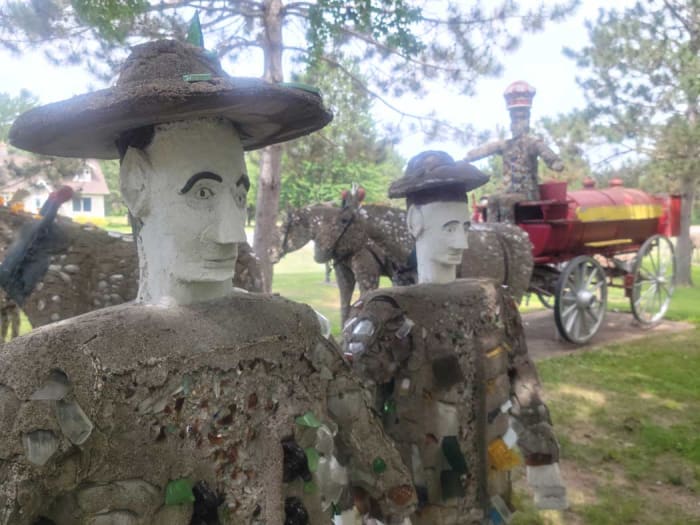
Fred Smith’s Wisconsin Concrete Park features 237 life-size and larger-than-life sculptures of people, animals and events from history, from local lore, and from Smith’s fertile imagination
Courtesy Paul Kennedy
Smith was born September 20, 1886, to immigrant German parents who settled in Ogema, Wisconsin, about 20 miles south of Phillips. He had no formal schooling. He couldn’t read or write. In later life, Smith was asked if his lack of formal education hindered him in anyway. “Hell no,” Smith said. “I can do things other people can’t do!”
About that, there’s little argument.
Smith worked the lumber camps in Wisconsin in the winter, starting in his early teens, for about fifty years. He woke in the cold and dark of early morning and spent his days working with large horses and enormous, hand-operated logging tools to cut and haul the great pines of the Northwoods. Being a lumberjack was dangerous and incredibly hard work. His starting pay was 99 cents per day. Smith was unfazed. “I made just that little bit of money and lived 5 kids and a woman on that money,” he said. “Never made no debts, never! That goes to show what people can do!”
When he retired, Smith didn’t set out to create hundreds of sculptures in fifteen short working seasons, a number almost unthinkable for someone slowed with arthritis. Like many artists, his work evolved out of a love for making things, for working and thinking with his hands.
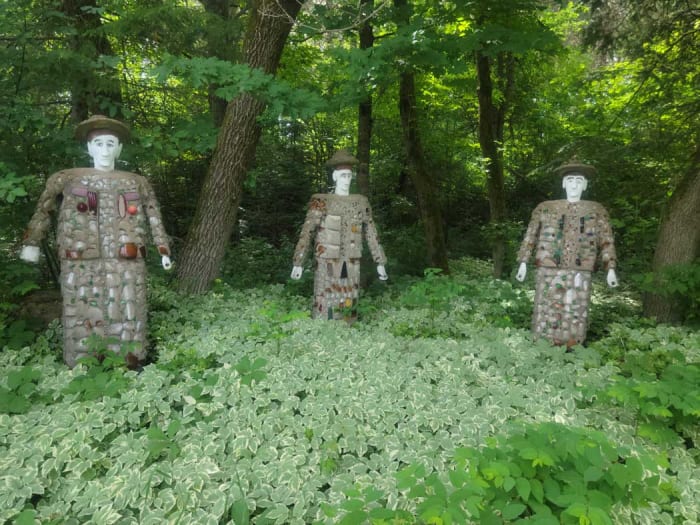
Sculptures of women emerge from the surrounding woods of the Wisconsin Concrete Park. In Smith’s world, women wore skirts and men wore pants.
Courtesy Paul Kennedy
Yet, the question for family and neighbors, was why?
‘Nobody knows why I made them, not even me,” Smith said in an interview years ago. “This work just came to me naturally.”
Smith was driven, consumed with his work. “I put in so many hours daylight to dark,” Smith said. “I figured I didn’t have much time to do all that work. Ya gotta get the work done.”
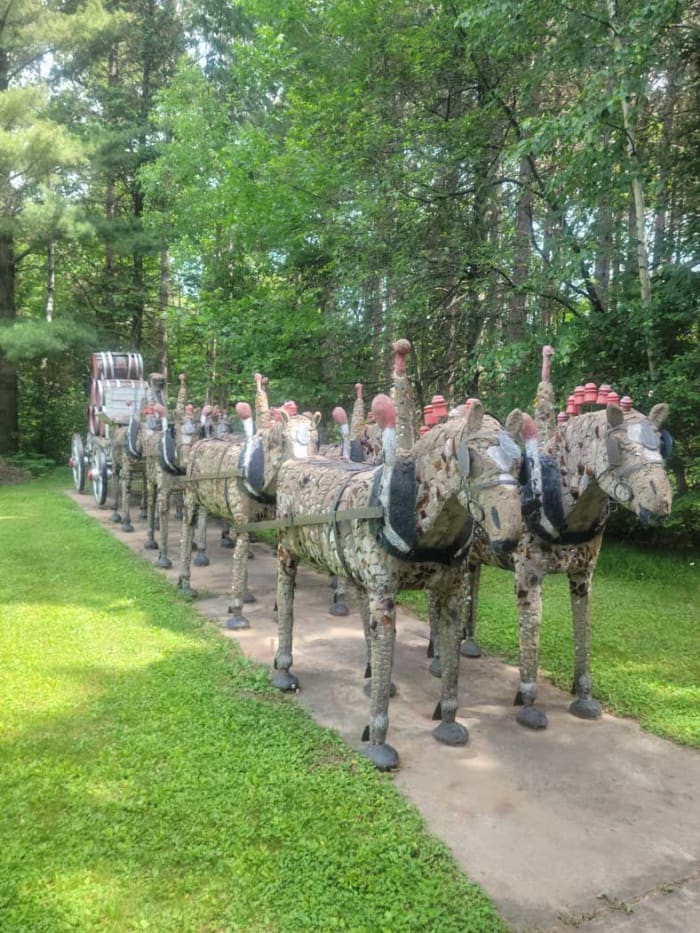
The last piece Fred Smith created: The massive Budweiser Display. Taking six months to complete, the work originally featured eight draft horses and two ponies and two figures and a dog seated on the wagon.
Courtesy Paul Kennedy
In 1964, shortly after Smith finished the last horse in his massive Budweiser Display, he suffered a stroke. He was moved to a rest home in Phillips, where he spent his last eleven years dreaming of sculptures he could no longer build.
Fortunately, Fred Smith’s Wisconsin Concrete Park outlived its builder. In 1976, the site, exclusive of the tavern and its surrounding property, was purchased by Kohler Foundation, Inc. of Kohler, Wisconsin and later gifted to Price County. The park is maintained and promoted by the Price County Forestry & Parks and Tourism departments with assistance from the Friends of Fred Smith, Inc., with regular restorative efforts.
For more information, go to WisconsinConcretePark.org.


